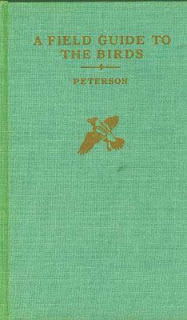Winter bird watching in New England may seem a bleak and windswept prospect but New England is situated along the Atlantic migration route or “flyway" and is also set at a mid-latitude locale overlapping both summer breeding and wintering grounds. Unlike Florida or Alaska which may see migration to or from, New England has both. For example Neo-Tropical summer migrants make their way north to New England in the Spring and winter sparrows and sea ducks make their way south to New England in the Winter. During the latter half of the year, the cold and ice-bound portion, well bundled birders should head to the ocean and look for sea ducks, loons, and grebes in the black and snow fletched sea. For Massachusetts Cape Cod make good destinations for viewing. In Rhode Island
Winter sea ducks may seem confusing as they stay off shore diving for dinner and bobbing between waves. A spotting scope and good field guide are essential and taking a guided trip can help immensely. On the upside, sea ducks (unlike fast flitting warblers) are not apt to burn valuable calories flying from place to place and remain fairly static, between dives, making for easier viewing. So fear not—besides cold ocean winds a trip to the New England beach in winter is a great reminder that all life is not gone during these cold months.





















